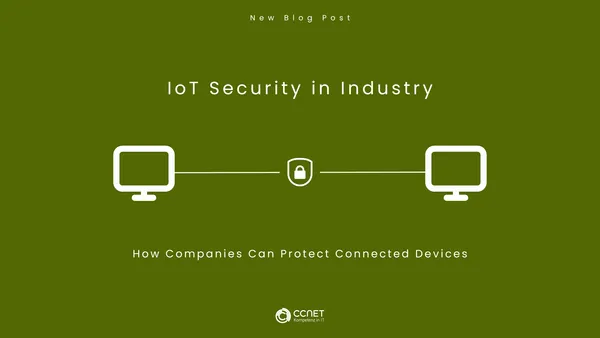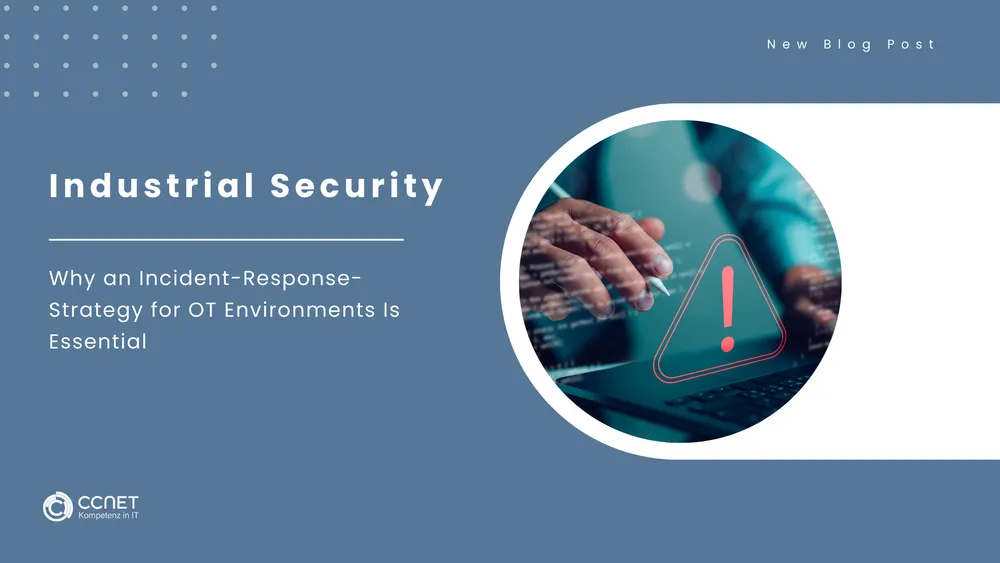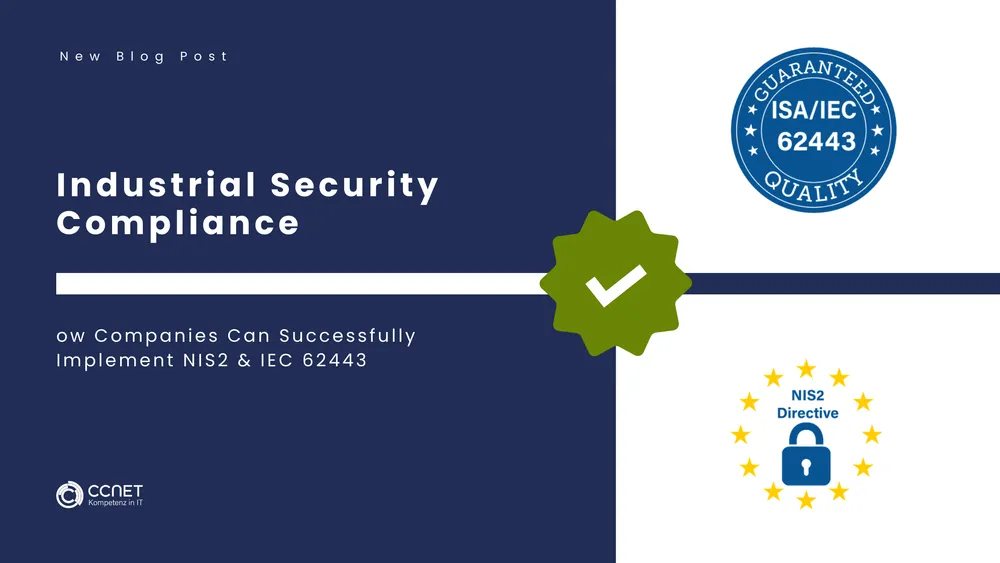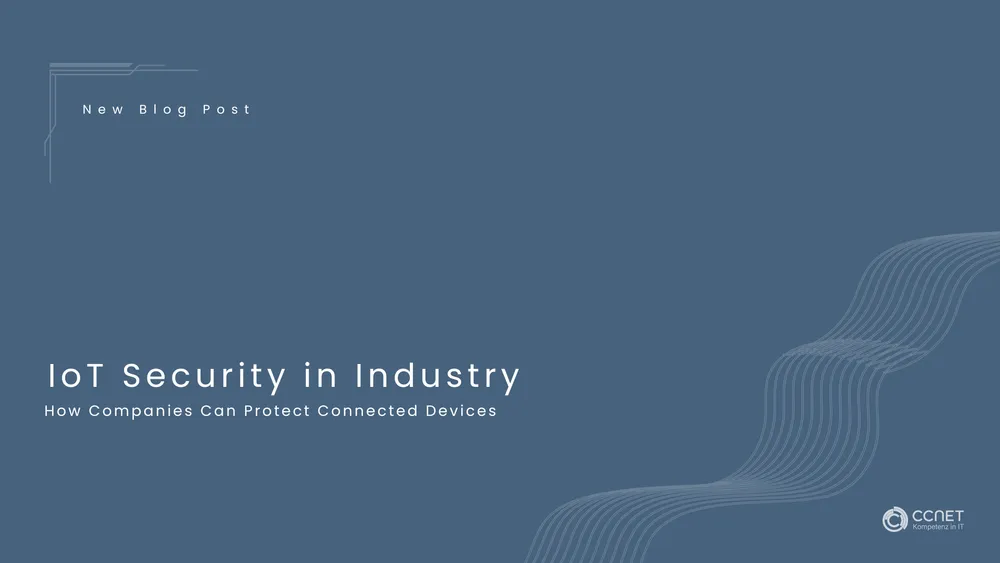
CCNet
May 9, 2025 • 2 min read

Security for IoT in Industry: How Companies Can Protect Connected Devices
The Industrial Internet of Things (IIoT) is revolutionizing manufacturing but also introduces new security risks.
Machines, sensors, and smart devices continuously collect and transmit data – but what happens if cybercriminals gain access to these systems?
Without a well-thought-out security strategy, every connected device becomes a potential entry point for attacks.
In recent years, cyberattacks on IIoT environments have increased significantly.
Hackers exploit unprotected sensors, insecure connections, or misconfigured devices to infiltrate and manipulate industrial control systems.
Further information can be found here: IT-Security
How Can Companies Secure Their IoT Environment Without Losing the Benefits of Connectivity?
The Biggest Security Risks in Industrial IoT
Whether smart production machines, connected sensors, or automated control systems – IIoT devices must securely collect, transmit, and store data.
However, in many cases, these processes are insufficiently protected.
Typical Security Issues in Industrial IoT Environments:
- Lack of authentication & access controls – Devices are often directly connected to the network without identity verification.
- Insecure firmware & missing updates – Many IIoT devices run on outdated software with known security vulnerabilities.
- Unencrypted communication – Sensitive production data is transmitted over the network without protection.
- Direct connection to the internet – Some IoT devices are externally accessible, which hackers can exploit.
- Supply chain vulnerabilities – Devices can be manipulated during manufacturing or delivery.
Every unprotected IoT device provides an attack surface that can compromise the entire production network.
Notable Cyberattacks on IoT Devices in Industry
-
Attack on an Italian Manufacturing Company (2022)
Hackers used insecure IoT sensors as an entry point into the network.
Consequence: Production machines were manipulated, leading to quality issues.
Prevention with Security Measures: Segmentation and authentication would have prevented the attack. -
Mirai Botnet Attacks on IoT Devices (2016 - Present)
Millions of IoT devices worldwide were infected with malware and used for DDoS attacks.
Affected devices: Smart cameras, routers, industrial sensors.
Prevention: Strong passwords and firmware updates could have mitigated the attacks. -
Attack on a Smart Factory System in Germany (2021)
Unencrypted communication between IoT devices was intercepted and manipulated.
Consequence: Sensors provided false data, leading to production errors.
Prevention: Secure encryption standards and real-time monitoring would have detected the problem.
Conclusion: IoT Devices in Industry Must Be Treated Like Any Other Critical IT Infrastructure
How Can Industrial Companies Secure Their IoT Devices?
-
Implement a Zero-Trust Architecture for IoT Devices
Every device must authenticate before accessing the network.
No IoT device should have full access to the corporate network. -
Implement Secure Authentication & Access Control
Only authorized devices should be allowed to connect.
Enable Multi-Factor Authentication (MFA) for IoT control systems. -
Use Network Segmentation with Firewalls & IDS/IPS
Separate IT, OT, and IoT networks to contain attacks.
Deploy Next-Gen Firewalls and Intrusion Detection Systems (IDS) for monitoring. -
Encrypt IoT Communication
Use secure protocols like TLS 1.3 or DTLS for all IoT data transmissions.
Avoid plaintext data streams in the network. -
Implement Regular Security Updates & Firmware Management
Automated updates for IoT devices to quickly close security gaps.
Use only devices from manufacturers that guarantee long-term support. -
Threat Detection with SIEM & Real-Time Monitoring
Use Security Information & Event Management (SIEM) to analyze IoT data flows.
Detect anomalies in IoT systems in real time to identify attacks early. -
Comply with Industrial IoT Security Standards
NIS2 and IEC 62443 require clearly defined security measures for IoT devices.
Follow best practices for industrial cybersecurity to minimize risks.
Conclusion: Industrial Companies Must Prioritize IoT Security
Every insecure IoT device is a potential entry point for hackers.
Without authentication and encryption, IoT data is vulnerable.
Modern security measures must integrate IoT environments into existing IT and OT security strategies.
Visit Us at SPS Parma and Learn How to Secure Connected Industrial Facilities


